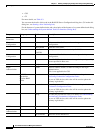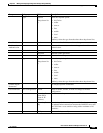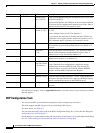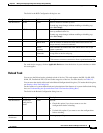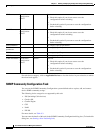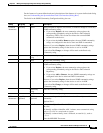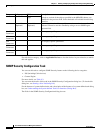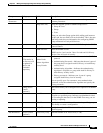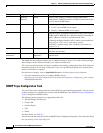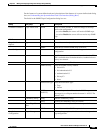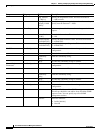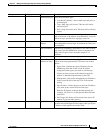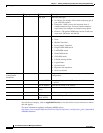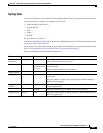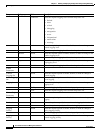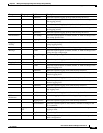
9-62
User Guide for Resource Manager Essentials 4.1
OL-11714-01
Chapter 9 Making and Deploying Configuration Changes Using NetConfig
Using System-defined Tasks
The SNMP Security template enables you to configure Groups as well as Users with certain privileges.
These Groups can be rolled back but the Users cannot be rolled back.
This is because the User details will not be available in the running configuration. Since NetConfig uses
the running config to do roll back, rolling back Users is not possible.You should run a separate job to
remove or add Users as required.
For each device category, click on Applicable Devices to view the devices in your selection.
• For more information on how to configure SNMP, refer to:
http://www.cisco.com/en/US/products/sw/iosswrel/ps1831/products_configuration_guide_chapter
09186a00800ca66b.html
SNMP Traps Configuration Task
You can use this task to configure the host, trap notification, and trap/inform parameters. You can specify
security parameters to communicate securely with the SNMP host. See
SNMP Security Configuration
Task to configure the SNMP security.
The following device categories are supported by this task:
• IOS (including Cable devices)
• Catalyst OS
• Content Engine
• CSS
• NAM
For more details, see Table 9-3.
You can enter the details of this task in the SNMP Traps Configuration dialog box. (To invoke this dialog
box, see
Starting a New NetConfig Job.)
Engine ID
[optional]
Action Select to add, remove, or make no change to the engine
configuration. SNMP Engine ID is an identification name for the
local or remote SNMP engine.
Type Select the type of engine:
• Local—Local SNMP server engine.
• Remote—Remote SNMP server engine.
ID Enter the Engine ID (identification name for the local or remote
SNMP engine). MIB OID Tree- Indicates the Object Identifier of
ASN.1 subtree to include or exclude from the view.
To identify an Object Identifier ASN.1 subtree, enter a numerical
string such as 1.3.6.2.4 or a word such as system.
To identify a subtree family, enter a wildcard, an asterisk (*),
such as 1.3.*.4.
Remote host Enter the hostname or IP address of the remote SNMP entity to
which the user belongs.
Content Engine
Parameters
Remote Engine ID
[Optional]
Enter the remote engine ID (identification name). This is an
optional field.
Group Sub-group Field Description



